The quality of the water we drink and use daily is essential to well-being and health. Polling indicates 61% of Americans worry “a great deal” about polluted drinking water.1 Whether you’re concerned about contaminants or chemicals in your well water or the overall pH of your city water, at-home water testing kits can give you an accurate range of results.
Water testing kits come in a couple varieties, and the one that’s right for you will depend on a few factors. You’ll find some testing kits combine methods, including both strips and color disks depending on which contaminant you’re screening for.
Types of Water Testing Kits
Before you dive into at-home water testing headfirst, we’ll walk you through the steps of choosing the right water testing kit. Each of the following considerations plays an important role in whether you’ll get definitive answers about the quality of your water from an at-home testing kit.
Water Quality Test Strips
Test strips are the most common method of testing water quality because they’re affordable and easy to use.
Fill a test container with a water sample, dip a test strip in, swirl the container, and wait a few minutes. Then you’ll compare the color changes on the test strip to a color chart included in the kit. Test strips can indicate the type of contaminant and its ppm (parts per million, a.k.a. its level of concentration in your water). Test strips aren’t as precise as other methods, they give a range that can pinpoint concerns.
Color Disk Kits
Instead of strips, these water testing kits have you add a few drops of water to a container with powder, shake it, and then place it in a viewing box. Rotating the color disk provided, you’ll compare colors with the container until you find a match. These kits are reported to have better accuracy than test strips for certain types of contaminants such as bacteria.
How to Test Water at Home
- Identify a water source
- Choose a testing method
- Decide which contaminants to test
- Calibrate testing to EPA standards
- Ensure accuracy of results
Identify Which Water Sources You Want to Test
The kind of testing kit you want depends on the water source you’re testing. If you’re interested in testing your city’s drinking water, a basic kit that covers common contaminants like lead and chlorine will get the job done. If you have well water, you’ll need a water quality testing kit that’s more comprehensive and includes screening for pesticides.
| Health Metric Drinking Water Test Kit |
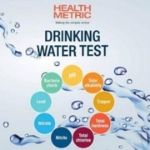 |
| This drinking water quality test from Health Metric has reliable, easy-to-use test strips for nine common contaminants. |
|
|
|
| View on Amazon |
Choose a Water Quality Testing Method
Most water quality test kits are intended for one-time use. You should also consider whether you plan to follow up an initial home test with testing that uses a professional lab. Because most test strips give a range of results rather than a specific number, the increased accuracy of color disk kits might be worth the cost.
Pro Tip
Decide Which Contaminants to Test For
What your kit tests for is a critical measure of how useful the results will be to you. Different water sources are more likely to have certain kinds of contaminants. For instance, well water is frequently used in rural areas where runoff from nearby fields could affect levels of pesticides or fertilizer toxins in the drinking water.
Which common contaminants should a water quality kit test?
Look for kits that, at a bare minimum, provide information about the following:
- Bacteria
- Lead
- Nitrates
- Nitrites
- Chlorine
Additionally, finding out more about the pH levels in your water (acidity versus alkalinity) and general hardness can be useful to counter quality issues like taste or smell.
| WaterSafe Well Water Test Kit |
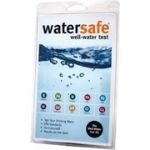 |
| Many homeowners enjoy having their own well water, but it can be susceptible to toxins in the watershed. A comprehensive water testing kit like WaterSafe is worth the additional cost to ease concerns about contaminants. |
|
|
|
| View on Amazon |
Calibrate Test to EPA Standards
While the EPA doesn’t endorse specific home water testing kits, it does provide guidelines for how often to test your drinking water and a list of risk factors that could lead to contamination. If you have city water, your municipality often has to provide testing results publicly every year to prove the safety of your drinking water. For those with well water, the EPA has easy-to-use contaminant tables so you can check your results against acceptable standards for safe drinking water.
Ensure the Accuracy of Your Results
While testing strips are easy to use and read, getting accurate results is a little more than meets the eye. If you want to maximize the effectiveness of your water quality testing kit, here are a few tips to follow.
Water Quality Testing Tips
- Read the directions.
- Don’t open testing strips until you’re ready.
- Wash your hands first.
- Keep a timer nearby.
- Use cold water.
- Pour carefully.
It’s also worthwhile to plan on getting a second opinion, especially if your water testing kit turns up any glaringly high levels. You can start with a basic, inexpensive kit like the one recommended below and then plan on following up with professional testing through a lab if the results are concerning.
| First Alert WT1 Drinking Water Test Kit |
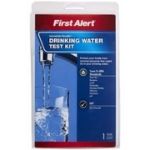 |
| This budget kit from First Alert covers all the basics, including pesticides. Its limited contaminant testing is versatile enough to give you a good baseline on both well water and city drinking water. |
|
|
|
| View on Amazon |
Recommended Home Water Quality Testing Kits
| List Price |
| Number of Contaminants Tested |
| Calibrates to EPA Standards |
| Tests for Both Lead and Copper |
| Tests Iron Levels |
| Pesticide Testing |
| Best for Drinking Water Testing | Best for Well Water Testing | Budget Pick |
| Health Metric Drinking Water Testing Kit | WaterSafe Well Water Test Kit | First Alert WT1 Drinking Water Test Kit |
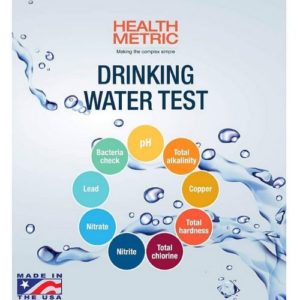 |
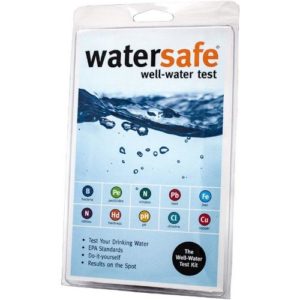 |
 |
| $26.95 | $29.94 | $19.99 |
| 9 | 10 | 8 |
| Yes | Yes | Yes |
| Yes | Yes | No |
| No | Yes | No |
| No | Yes | Yes |
| View on Amazon | View on Amazon | View on Amazon |
Data effective 9/5/2019. Offers and availability subject to change.
FAQs about Testing Water Quality
How long does it take to get results using an at-home water quality test?
Most at-home tests don’t require mailing samples to a lab and can provide results within 10 minutes. The exception is some of the more complicated tests like those for bacteria, which may require maintaining a certain temperature and up to 48 hours to develop fully.
Are the results from at-home water quality testing kits reliable?
Results from at-home water quality testing kits can be reliable if you follow the instructions carefully. Making sure you don’t open the test strips accidentally or expose them to other substances on your hands will help. You should also be careful to use cold water that has run for several minutes and time your tests closely. If you follow the instructions, most at-home water quality tests fall within the range of professional testing results.
My drinking water has some serious contaminants. What do I do next?
If the results from your at-home drinking water test kit are concerning, you should confirm them with professional testing to pinpoint the problem. Whether it’s aging pipes or toxins in the watershed, investing in a water filter to ensure safe drinking water for your family is a crucial first step. Check out our recommendations for the best water filters to see which solution may work best for you.
Related Pages on SafeWise
Sources
The post How to Test Water at Home with a Water Test Kit appeared first on SafeWise.
Article source here: How to Test Water at Home with a Water Test Kit
No comments:
Post a Comment